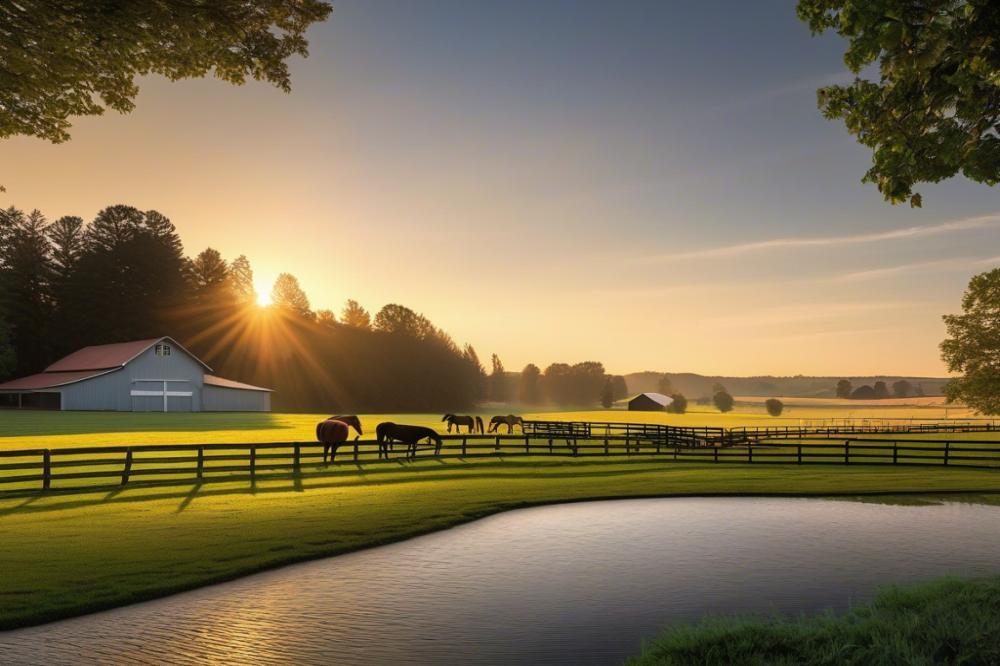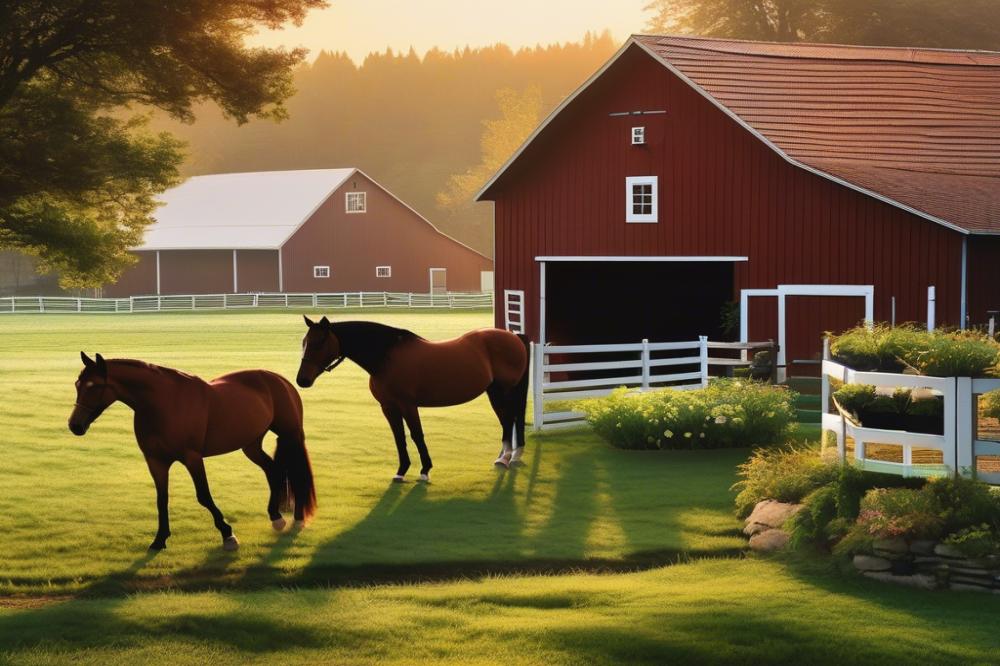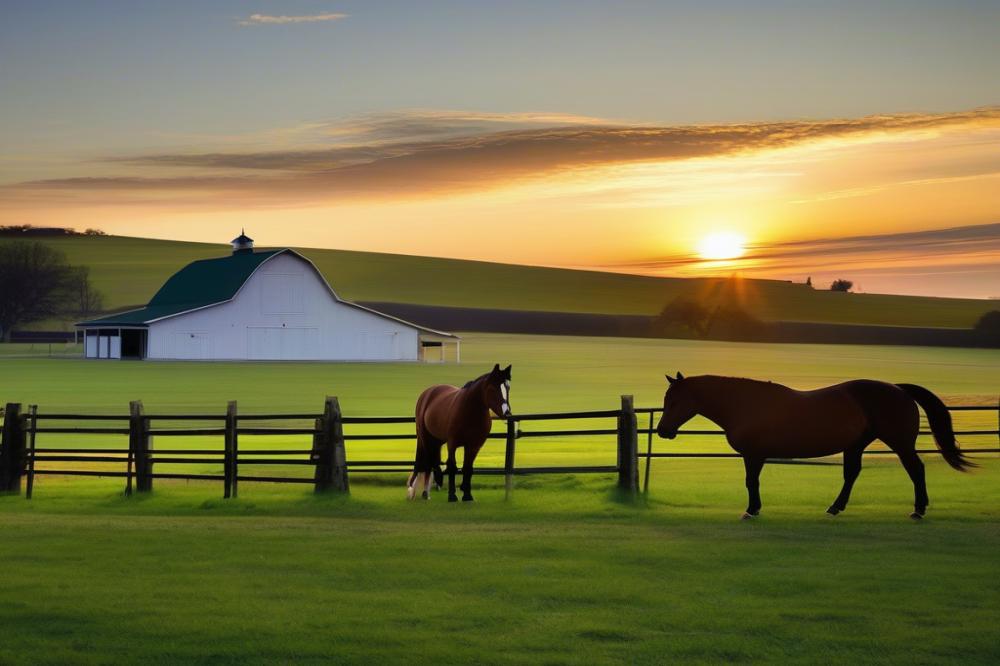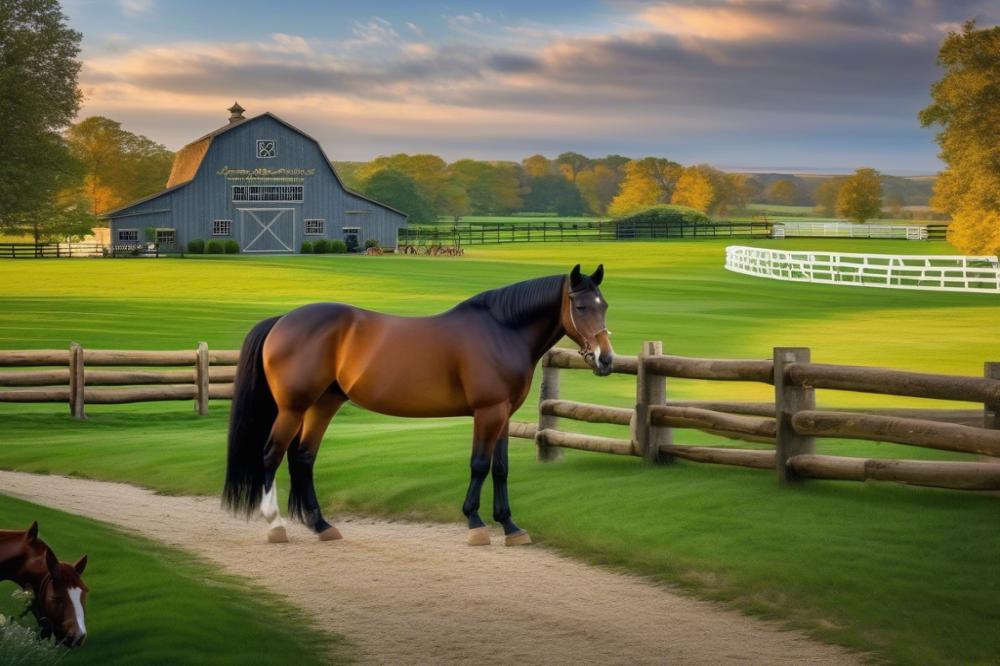Considerations for Breeding Sport Horses
Breeding sport horses involves a mixture of science, art, and passion. Many people dedicate their time and resources to produce animals that excel in various disciplines such as dressage, show jumping, and eventing. Success in competitions often depends on the horse’s physical abilities, temperament, and overall health. Therefore, breeders must adopt a careful approach in their practices.
Careful planning in breeding is not just a choice; it is a necessity. Decisions made today can shape the future of equestrian sports. Selecting the right stallion and mare requires knowledge of Equine Genetics. This knowledge helps understand traits that may be passed to offspring. A solid understanding of bloodlines also aids in predicting performance potential.
Breeders must also consider factors like conformation, movement, and temperament. Each horse possesses unique qualities, making it vital to evaluate what specific strengths could contribute to competitive success. The breeding process takes time and demands thoughtful insights from all angles. From genetic testing to evaluating physical attributes, each step carries its weight in the overall process.
In conclusion, Sport Horse Breeding is a detailed endeavor. Breeders must weigh many factors to produce healthy, capable horses that can thrive in competitive environments. The right decisions, informed by both knowledge and experience, will result in better future generations.
Sport Horse Breeding

Breeding sport horses involves a strategic approach aimed at developing horses that excel in competitive disciplines such as jumping, dressage, and eventing. The main purpose is to create animals that not only possess physical abilities but also exhibit the right temperament for sports. Selecting the right parents is crucial. This process often includes thorough evaluations and careful consideration of lineage.
Desirable traits in sport horses are varied and comprehensive. Physical strength is fundamental for performance. Horses must have athletic builds, which include powerful hindquarters, strong legs, and good bone structure. In addition to physical attributes, a balanced temperament is equally important. Horses need to be cooperative, willing to learn, and not easily spooked. These qualities contribute to their success in high-pressure environments.
Many breeders also look for intelligence in sport horses. A smart horse can better understand cues from its rider and adapt to challenging situations. Speed can be a vital component as well, particularly in disciplines that require quick bursts of energy. Furthermore, stamina is essential for events that last longer, like endurance riding.
Another key aspect to think about is movement. Horses with fluid gaits often perform better in dressage, while those with explosive jumping ability are favored in show jumping. Good conformation and a captivating presence can help a horse stand out in competitions. These traits can attract the attention of judges and potential buyers alike.
In summary, breeding sport horses is a careful blend of science, strategy, and intuition. Understanding the traits that contribute to success can help breeders achieve their goals. Each decision made during the breeding process impacts the future performance of the horse.
bloodlines and Pedigree

Bloodlines hold significant importance in breeding sport horses. They provide insights into genetic traits and overall capabilities. Understanding these bloodlines can guide breeders in making informed decisions. The lineage of a horse can affect its performance, temperament, and even health. Pedigrees reveal the influence of previously successful horses. Identifying these successful lineages increases the likelihood of producing talented offspring.
Many equestrian disciplines strive to highlight the best traits of horses. This is evident in the careful selection of bloodlines. Not every bloodline is created equal; some excel in jumping while others shine in dressage. Analyzing the success of a horse’s ancestors can indicate potential ability. Breeders often study competition results to see which bloodlines yield successful athletes.
Notable Bloodlines in Equestrian Disciplines
Some bloodlines have established their reputation over time. The Thoroughbred, for instance, is renowned for its speed and agility. Another exceptional line is the Hanoverian, prized for conformation and trainability. Warmbloods, especially Dutch Warmbloods, have also dominated international competitions. Each bloodline brings its own set of strengths and traits.
A horse’s pedigree helps buyers and trainers make smart choices. Links to famous champions often enhance a horse’s value significantly. When a foal has a lineage of high achievers, expectations naturally rise. However, it is critical to remember that not every foal will meet these expectations. Each horse is an individual and should be evaluated as such.
Choosing a breeding horse with a notable pedigree can lead to more consistent results in sports. It sets a foundation for potential success. Some breeders may seek out lesser-known but still high-performing bloodlines. These unique choices might result in a hidden gem. Ultimately, a well-considered analysis of bloodlines leads to better breeding outcomes.
Conformation and Athleticism

Key aspects of conformation in sport horses
Conformation refers to the horse’s physical structure. It includes the shape of the body, the length of legs, and the angle of joints. Each breed has certain features that are ideal for various sports. For example, a sport horse should have a well-proportioned body that allows for balanced movement. Strong bones and a muscular build are also essential for athletic performance.
A correct leg structure is vital. Straight legs with solid joints support endurance and strength. Hoof quality is equally important, as weak hooves can lead to injuries that affect performance. Additionally, a horse with a well-defined neck and a conformationally sound back can show better flexibility and power.
Relationship between conformation and athletic ability
There is a clear link between a horse’s conformation and its ability to perform well in sports. Horses with the right physical traits often excel in competition. Good conformation helps prevent injuries. When a horse has a strong, balanced frame, it can move efficiently and with agility.
Moreover, the right proportions can influence speed. Horses that are built correctly often have a longer stride. This helps them cover more ground, which is crucial in many equestrian disciplines. Therefore, the traits that define conformation can directly impact how well a horse competes in its chosen sport.
Evaluating movement and physical structure
Assessing how a horse moves is important when considering breeding. Observation of movement can reveal much about its athletic potential. A horse should move with a sense of rhythm and grace.
When evaluating a horse, look for smooth transitions in gait. Each step should reflect strength and confidence. Pay attention to how the horse uses its hindquarters. A powerful push from behind enables better acceleration and jump height during competitions.
Physical structure also plays a role in judging movement. Analyzing the angles at the shoulder and hip can determine how effectively a horse moves. Additionally, observing the alignment of joints offers insights into possible weaknesses. Movement is a holistic evaluation, as both structural integrity and agility combine to showcase a horse’s true potential.
Temperament and Trainability
Temperament plays a crucial role in the performance of sport horses. A calm and focused horse will often perform better in competitions than one that is easily distracted or overly excited. Understanding a horse’s disposition can help owners and trainers identify suitable mounts for various disciplines. Horses that are bold and willing may excel in events requiring bravery and agility, while those with a more relaxed nature may shine in disciplines that call for precision and patience.
Assessing traits related to trainability is also vital. Horses that respond well to training cues and demonstrate a willingness to learn can achieve great success in competitions. Key attributes include obedience, intelligence, and adaptability. Horses that exhibit these qualities can be molded into top-performing athletes. Moreover, trainable horses are often able to tackle new challenges with more confidence and less stress.
Balancing temperament with athletic potential is essential in breeding. High-caliber performance in competitions often comes from a mix of physical ability and a favorable attitude. A horse may possess exceptional speed or strength, yet if it struggles with its temperament, those advantages might go to waste. Evaluating the temperament of both parents can provide insights into potential offspring, guiding breeders toward the ideal combination for future sport horses.
Ultimately, it is important to keep both aspects in mind when considering breeding decisions. Each horse operates differently under pressure, and understanding individual reactions can lead to better training outcomes. Selective breeding that prioritizes both temperament and trainability can result in offspring well-suited for rigorous competition environments.
Nutrition and Health Management
Essential Nutritional Requirements for breeding horses
breeding horses have specific nutritional needs. A balanced diet is key to their reproductive health. Protein is crucial for muscle development and tissue repair. Vitamins and minerals also play significant roles in this phase. Calcium and phosphorus support bone strength. Omega fatty acids contribute to optimal reproductive function. Quality hay and grains form the foundation of their diet. Hydration is equally important. Clean water should always be available. Regular monitoring of body condition is necessary. Overweight or underweight horses may face complications during breeding.
Impact of Nutrition on Growth and Development of Foals
Foals depend on their mother’s nutrition from the start. Proper nutrition during pregnancy leads to healthier foals. Protein-rich diets promote growth and muscle development in young horses. Nutritional deficiencies can cause serious health issues. Insufficient vitamins may affect the foal’s immune system. Early nutrition influences future performance. Feeding the dam well can enhance foal vitality and strength. Nutritional support continues after birth. Providing quality foal feed ensures strong bones and overall health. Growth should be monitored closely in the first year.
Health Management Practices to Support Breeding Programs
Health management is vital for successful breeding. Regular veterinary check-ups maintain overall well-being. Vaccinations should be kept up to date. Deworming schedules help prevent parasitic infections. Hoof care also plays a significant role. Healthy hooves contribute to soundness and performance. Proper exercise routines benefit both pregnant mares and foals. Assessing the environment is important too. Clean, safe living conditions promote health. Socialization is key for foals; they learn from interacting with others. Implementing these practices fosters a robust breeding program.
Breeding Programs and Techniques
Overview of Effective Breeding Programs
Successful breeding programs play a crucial role in developing sport horses. A well-structured plan helps breeders achieve their goals. Consider factors such as genetics, conformation, and temperament throughout the process. Each goal should focus on producing healthy, athletic horses. Monitoring progress regularly will help identify strengths and weaknesses. Staying updated with the latest research can improve breeding outcomes.
Selecting Suitable Mares and Stallions
Choosing the right mare is vital for breeding success. Look for mares with a proven performance record and good health. Their pedigree can greatly influence the offspring’s potential. Stallions also require careful selection. Competitive records and similar traits to the mare are important. Both parents should have desirable characteristics to pass down to their foals. Always aim for balance in traits. Diversifying bloodlines will help reduce health problems and enhance traits in the horses.
Artificial Insemination Versus Natural Covering
Breeders often face the decision between artificial insemination and natural covering. Each technique has its advantages and disadvantages. Artificial insemination allows access to a wider range of stallions. It often improves convenience and safety for both horse and handler. However, natural covering offers a more traditional approach and can reduce stress for the horses involved. Costs and logistics can influence the choice as well. Ultimately, the decision should align with the goals of the breeding program.
Foaling and Early Development
Preparing for Foaling and Care of the Mare
Preparation begins well in advance of the foaling date. A comfortable and safe environment is essential for the mare. This area should be quiet and free from distractions. Regular check-ups with a veterinarian play a crucial role during this time. The mare’s nutritional needs increase, so consider a high-quality diet rich in vitamins and minerals. Monitor her behavior closely, as changes can indicate impending labor. Also, understanding the signs of foaling can help in planning support for the mare.
Important Considerations During Foal Development
After the foal is born, immediate care is vital. Make sure the foal stands and nurses within the first few hours of life. Colostrum from the mare contains antibodies crucial for the foal’s immune system. Observing the foal’s growth is important; it should steadily gain weight. Providing adequate space is necessary for the foal to explore and develop its muscles. Early interactions with the dam can influence social skills later on. Always be attentive to any signs of health issues, as foals are vulnerable in their early days.
Early Training and Socialization
Beginning training and socialization early can lay a solid foundation for future development. Short, positive sessions help the foal become accustomed to human interaction. Introducing simple handling tasks, such as grooming and leading, builds trust and confidence. Gradual exposure to various environments enhances adaptability. Being around other horses encourages social skills and reduces stress. A patient approach aids in developing a well-rounded sport horse. Remember, the goal is to create a positive experience that fosters learning and growth.
Training and Competition Preparation
Developing a sport horse relies heavily on effective training methods. Quality training helps shape the horse’s skills and attitudes, preparing them for the demands of competition. A structured training program allows the horse to learn essential movements and respond to a rider’s commands with precision. This process is not merely about physical exercise; it also builds trust between horse and handler.
Early groundwork plays a vital role in a young horse’s education. Introducing basic concepts like leading, lunging, and desensitization can establish a solid foundation. Groundwork acts as the first step in developing athleticism, focus, and calmness under pressure. Specialized training can then build upon this groundwork, refining the horse’s abilities in specific disciplines such as jumping, dressage, or eventing.
When preparing for competition, the horse must be conditioned both physically and mentally. Consistent daily training routines help to bolster the horse’s endurance and strength. Riders should also work on competition strategies to familiarize their horse with the environment. Acclimating the horse to various venues and settings is crucial. It reduces anxiety and fosters confidence during events. Each competition presents an opportunity for the horse to showcase its skills, both on the ground and in the ring.
Diverse training techniques are often necessary to cater to the horse’s individual needs. Some might excel in specific areas while requiring extra attention in others. Therefore, recognizing these strengths and weaknesses supports a more focused training regimen. Beyond physical preparation, mental conditioning remains equally important. Horses can become nervous or distracted in new environments; managing their emotional state is essential to improved performance.
Finally, performance testing is a common aspect of sport horse preparation. These tests help assess the horse’s readiness for competition. Riders and trainers gain valuable insights into how their horse is likely to perform under pressure. Through careful observation and analysis, adjustments to training plans can be made as necessary. Every detail, from nutrition to training intensity, contributes to the horse’s overall performance capabilities.
Final Thoughts on Breeding Considerations
Recap of Key Considerations
Breeding sport horses involves several important factors. Selecting the right mare and stallion is crucial. Bloodlines play a significant role in determining the genetic potential of the offspring. Additionally, conformation should not be overlooked, as it affects performance capabilities. Training history and temperament of the parents can influence the traits of the foal. Understanding these elements allows breeders to make informed decisions and choose wisely.
Encouragement to Approach with Knowledge
Approaching breeding requires knowledge and care. Researching various aspects, such as genetics, health, and performance, can significantly impact outcomes. Engaging with experienced breeders and veterinarians provides valuable insights. This collaborative approach can help prevent common breeding mistakes. Choosing to be diligent and patient pays off in the long run.
Future Trends in Practices
Looking ahead, several trends may shape future breeding practices. Advances in technology, like genetic testing, are likely to become the norm. These tools can help breeders make more precise selections based on desirable traits. Sustainable breeding practices may also gain attention, focusing on horse welfare and environmental factors. The sport horse community is evolving, and adapting to these changes will be essential for success. Breeders committed to education and adaptation will lead the way in improving the quality of sport horses in the years to come.



